Table of contents
- Aprilia RSV4 Factory, Ducati 1198S, Honda Fireblade, Kawasaki Ninja ZX-10R, KTM 1190 RC8 R, Suzuki GSX-R 1000, Yamaha YZF-R1 The Big Bang
- Aprilia RSV4 Factory
- Ducati 1198S
- Honda Fireblade
- Kawasaki Ninja ZX-10R
- KTM 1190 RC8 R.
- Suzuki GSX-R 1000
- Yamaha YZF-R1
- Technical data Aprilia RSV4 Factory
- Technical data Ducati 1198S
- Technical data Honda Fireblade
- Technical data Kawasaki Ninja ZX-10R
- Technical data KTM 1190 RC8 R
- Technical data Suzuki GSX-R 1000
- Technical data Yamaha YZF-R1
- Performance measurement, setup
- Lap times Oschersleben
- HP rating Aprilia RSV4 Factory
- HP rating Ducati 1198S
- HP rating Honda Fireblade
- HP rating Kawasaki Ninja ZX-10R
- HP rating KTM 1190 RC8 R
- HP rating Suzuki GSX-R 1000
- HP rating Yamaha YZF-R1
- Conclusion
- Credits
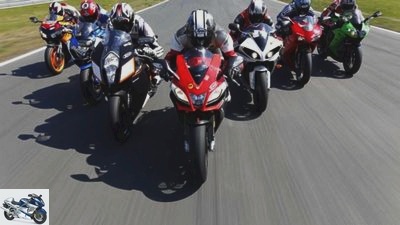
Jahn
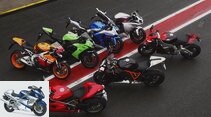
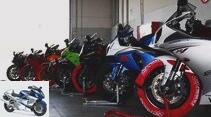
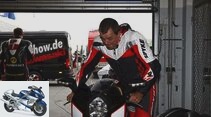
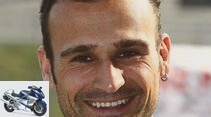
31 pictures

Photos: fact / Jahn
1/31
Honda Fireblade, Kawasaki Ninja ZX-10R, Suzuki GSX-R 1000, Yamaha YZF-R1, Ducati 1198S, KTM 1190 RC8 R and Aprilia RSV4 Factory compete for the race track comparison.
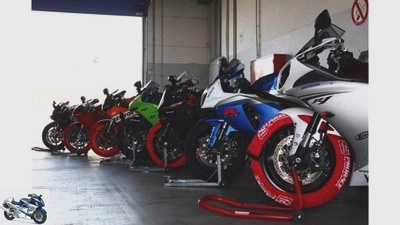
Photos: fact / Jahn
2/31
Race track operation also means: tire warmers. Necessarily. Set off on a preheated Metzeler Racetec Interact K3.
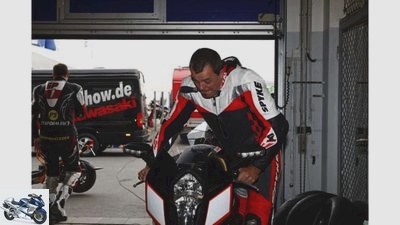
Photos: fact / Jahn
3/31
The KTM technician puts the finishing touches on the chassis…
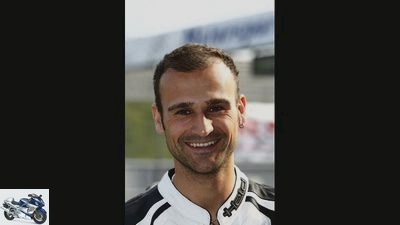
4/31
IDM professional Pascal Eckhardt will go hunting for lap times with the superbikes in Oschersleben.

Photos: fact / Jahn
5/31
…and off we go!
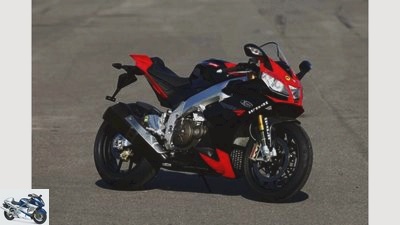
Photos: fact / Jahn
6/31
Aprilia RSV4 Factory: 180 hp, 295 km / h, 19500 euros.
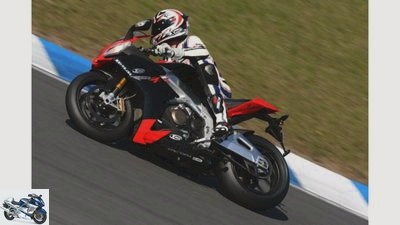
Photos: fact / Jahn
7/31
Pascal Eckhardt’s best lap time with the Aprilia RSV4 Factory: 1: 32.419 min.
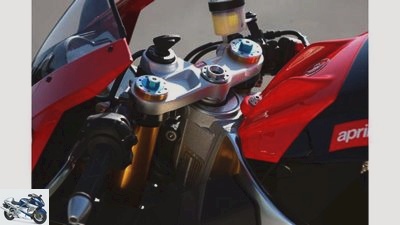
Photos: fact / Jahn
8/31
From every perspective, the Aprilia RSV4 Factory looks like a racing motorcycle.

Photos: fact / Jahn
9/31
Ducati 1198S: 170 hp, 288 km / h, 21,990 euros.
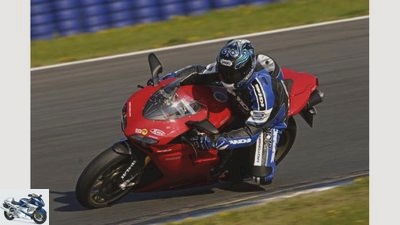
Photos: fact / Jahn
10/31
Pascal Eckhardt’s best lap time with the Ducati 1198S: 1: 35.495 min.
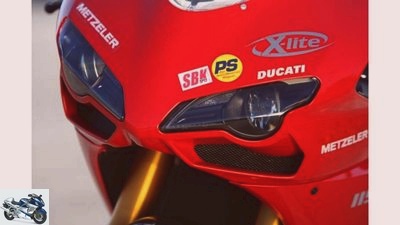
Photos: fact / Jahn
11/31
The now familiar face of the Ducati 1198S seems to wink at the testers.
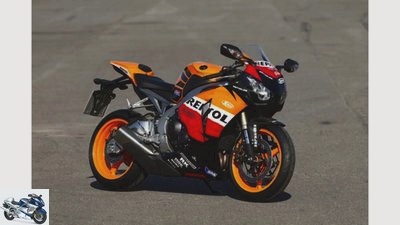
Photos: fact / Jahn
12/31
Honda Fireblade C-ABS: 178 PS, 293 km / h, 15,790 euros.
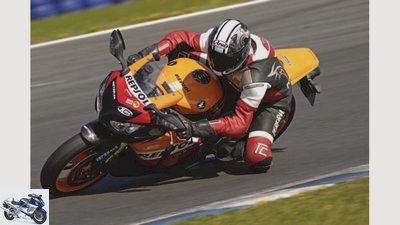
Photos: fact / Jahn
13/31
Pascal Eckhardt’s best lap time with the Honda Fireblade: 1: 34.717 min.
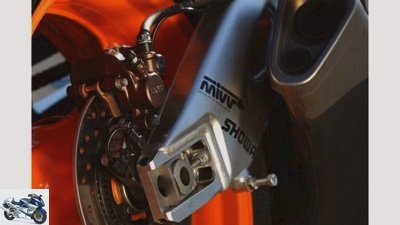
Photos: fact / Jahn
14/31
The Honda Fireblade’s C-ABS impressed all testers; even the initially skeptical IDM racer Pascal Eckhardt was impressed in the end.
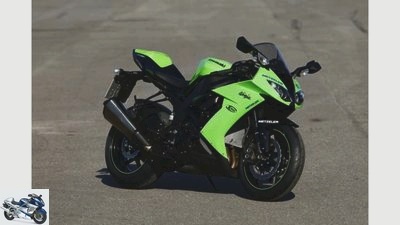
Photos: fact / Jahn
15/31
Kawasaki Ninja ZX-10R: 188 hp, 298 km / h, 13,645 euros.
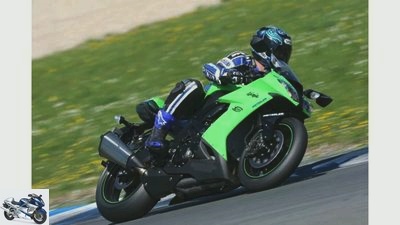
Photos: fact / Jahn
16/31
Pascal Eckhardt’s best lap time with the Kawasaki Ninja ZX-10R: 1: 34.700 min.

Photos: fact / Jahn
17/31
If the Kawasaki ZX-10R’s brakes grab and the rear wheel becomes light when downshifting, the slipper clutch prevents it from stamping.
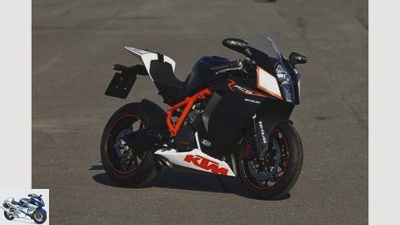
Photos: fact / Jahn
18/31
KTM 1190 RC8 R: 170 hp, 280 km / h, 20,995 euros.
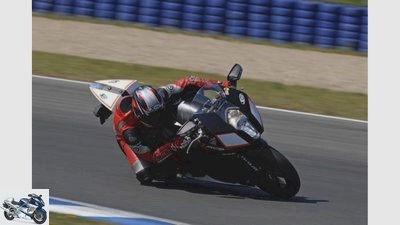
Photos: fact / Jahn
19/31
Pascal Eckhardt’s best lap time with the KTM 1190 RC8 R: 1: 33.572 min.
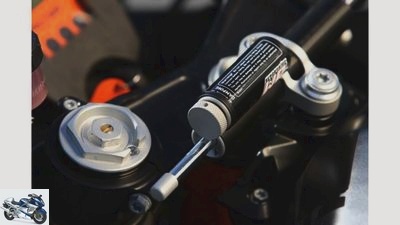
Photos: fact / Jahn
20/31
The pragmatic KTM 1190 RC8 R is of course equipped with a steering damper.
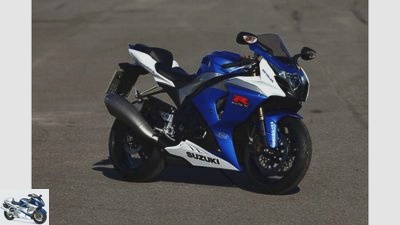
Photos: fact / Jahn
21/31
Suzuki GSX-R 1000: 185 hp, 295 km / h, 13890 euros.
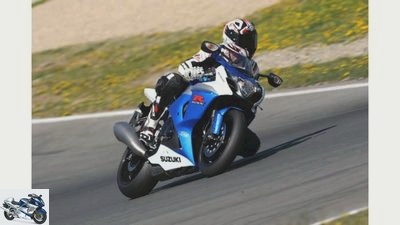
Photos: fact / Jahn
22/31
Pascal Eckhardt’s best lap time with the Suzuki GSX-R 1000: 1: 34.806 min.
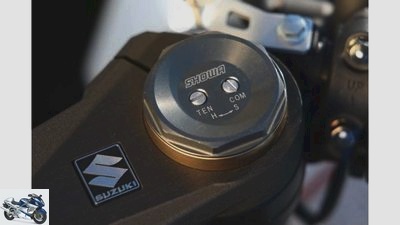
Photos: fact / Jahn
23/31
Adjust the rebound and compression level at the top of the fork leg – a special feature of the Suzuki GSX-R 1000.

Photos: fact / Jahn
24/31
Yamaha YZF-R1: 182 hp, 285 km / h, 14895 euros.
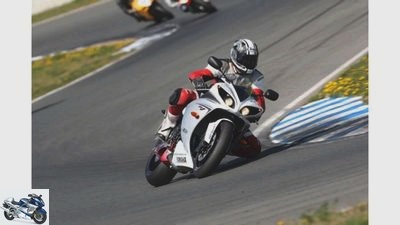
Photos: fact / Jahn
25/31
Pascal Eckhardt’s best lap time with the Yamaha YZF-R1: 1: 34.124 min.
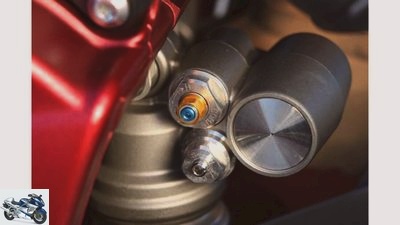
Photos: fact / Jahn
26/31
The shock absorber of the Yamaha looks chic and is easy to reach with the adjustment tool – by no means a matter of course.

Photos: fact / Jahn
27/31
The BMW S 1000 RR did not take part in the comparison test,…

Photos: fact / Jahn
28/31
…only Jurgen Fuchs did his laps with it.
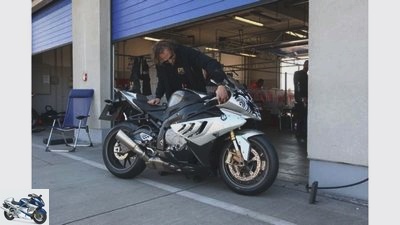
Photos: fact / Jahn
29/31
You would really like to yourself … but that would certainly be a lot of trouble!
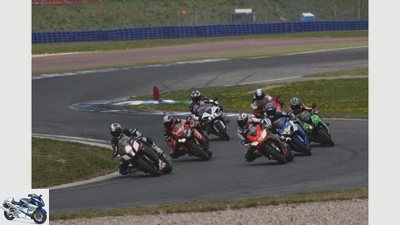
Photos: fact / Jahn
30/31
Let’s make do with the Magnificent Seven who took up the competition.
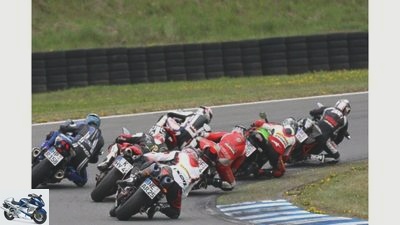
Photos: fact / Jahn
31/31
You can read the whole story with all the trimmings in PS 6/2009.
motorcycles
Aprilia RSV4 Factory, Ducati 1198S, Honda Fireblade, Kawasaki Ninja ZX-10R, KTM 1190 RC8 R, Suzuki GSX-R 1000, Yamaha YZF-R1
Aprilia RSV4 Factory, Ducati 1198S, Honda Fireblade, Kawasaki Ninja ZX-10R, KTM 1190 RC8 R, Suzuki GSX-R 1000, Yamaha YZF-R1
The Big Bang
Content of
The newcomer must first prove what he can do. That was the way it used to be on the football field; that’s how it is today when a new superbike hits the scene. The Aprilia RSV4 Factory want to show everyone where the hammer hangs. Or is it the other way around?
Robert luck
06/10/2009
If a motorcycle has every reason for a cool, serene appearance, then the Aprilia RSV4 Factory. It was consistently developed for the Superbike World Championship and was only approved for road use because it needed it in order to be allowed to take part in the World Championship.
But even the Aprilia seems a bit uncomfortable, after all, it is not only constantly surrounded by curious people in the PS box in Oschersleben, but is always accompanied by the who’s who of the superbike scene: Ducati 1198S are lurking for them , Honda Fireblade, Kawasaki Ninja ZX-10R, KTM 1190 RC8 R, Suzuki GSX-R 1000 and Yamaha YZF-R1; the first two even with electronic driving aids such as traction control on the Duc and the C-ABS on the Honda.
While the four Japanese have already had their first exclusive match behind them (), the KTM RC8 R, like the Aprilia, is new to the series of seven and an unknown for everyone. They are patterned with big eyes and create tension. High time to get rid of this feeling and let the facts speak for themselves through action.
Aprilia RSV4 Factory
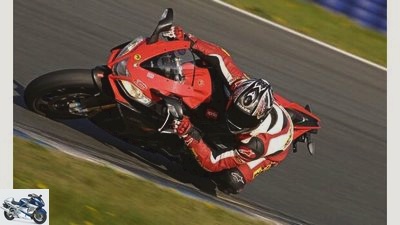
Aprilia RSV4 Factory.
How long has it been since a V4 engine shaken up the world of athletes? Quite a long time, because at the end of 1999 the Honda RC45 was the only V4 superbike to retire. And remembers Aprilia of the advantages of the compact V4 concept. The first seat test on the Aprilia RSV4 Factory is impressive, it feels smaller than a Supersport 600, but still offers plenty of space and convinces with high-quality components and a good finish.
Start the V4 in flight and listen eagerly to the snotty sound, the sawing idle. It takes a while for the engine to run smoothly and for the injection to ensure a constant speed. Get on and off, out into the round! The first hello-wake experience as soon as you turn onto the track: The Aprilia RSV4 Factory angles at the blink of an eye, throws itself in an inclined position, as if it wanted to drill its handlebars into the asphalt. Respect, such hyper-agile behavior is expected from a race-ready 600, but not from a thousand with indicators, mirrors and license plate holders.
With the cable taut, the Aprilia RSV4 Factory is circling the Borde as if it were a question of qualifying. As precise as a die, it runs on the desired line, turns in without any noteworthy resistance on the brakes, rushes towards the apex and leaves it with full power on the targeted paths. Provided that the injection is operated in S mode. Who on T like “Track” shifts, is surprised by a far too aggressive throttle response, which thwarts a clean line and annoys the pilot. In S mode, on the other hand, the compact V4 is very good-natured and controllable. It feels like a strong 750, but puts 185 horses on the dyno roller!
This driving experience comes from the linear, unexcited power delivery on the one hand, and from the incredibly playful handling on the other. This combination makes fast driving very stress-free for the experienced driver, he can concentrate on the line, on braking and acceleration points, instead of fighting with the motorcycle.
A look at the lap times shows how convincingly the Aprilia RSV4 Factory works: the IDM driver burns a superior fast lap with it, the amateur racer achieves his second-best time with it right away. With the difference, however, that the IDM fan immediately felt at home at the Aprilia RSV4 Factory and the hobby jockey would have liked to do one or the other training lap because of her very direct nature.
Ducati 1198S
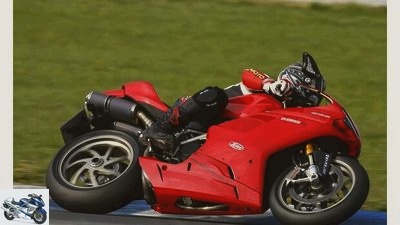
Ducati 1198S.
Direct, handy, balanced. These are properties that are expected of a landing gear, but are seldom delivered. Ducati Since the keel-laying of the 1098S and its unchanged chassis set-up, which has been adopted into the 1198S, the path has been difficult to understand: The fork of the Ducati 1198S is very soft, while the shock absorber is very stiff. This disharmony not only pushes amateur but also professional racers to their limits.
The assembled test journalists also quarreled with the Ducati 1198S setup: understeer at corner exit and inharmonious, indirect steering behavior were criticized. Only a rough intervention in the setting made the 1198S turn out to be worthy of the great engine’s driving behavior.
On the other hand, there was unanimous enthusiasm for the traction control: In level 3, when accelerating out, it conveyed the feeling of being an invincible Siegfried, encouraging the driver to accelerate earlier and earlier. Truly a highlight that the system is StVZO-compliant. In addition to the fabulous thrust of the twin, the gearbox was noticeable as it only allowed gear changes with considerable operating force.
The formidable Brembo stoppers are completely different: they are almost too snappy in everyday use and very often chase the soft fork on a block, but they shine on the racetrack. Two fingers are enough for a fist-thick braking performance with the finest controllability. Only rough waves in the braking zone cause trouble and a briefly over-braked front wheel.
Honda Fireblade
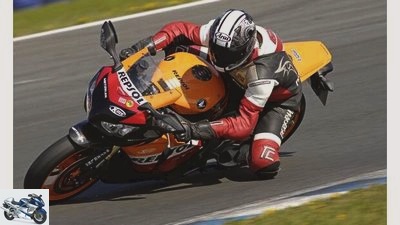
Honda Fireblade.
ABS on the racetrack? Yes of course! Even Pascal Eckhardt, as a lap time driver, was able to take advantage of the system. He attested that he did not feel it was working. Only the additional weight of 10 kilos is clearly noticeable. The Honda Fireblade feels sluggish when turning and has lost some of its turning speed. However, if it is on an incline, it drives smoothly and precisely, stays on the track even when accelerating out despite the very soft basic set-up, and with its powerful, easy-to-measure acceleration, it also provides a great feeling at the exit of a curve.
The Honda Fireblade is always careful to carry the pilot around the course as if wrapped in cotton wool: calmly at the braking point thanks to anti-hopping and good balance; full and not hyper-nervous at the apex of the curve; powerful, but not brutal when opening the throttle. The all-round carefree package on two wheels has no sharp corners or edges, which is why it often comes across as a fun brake or spoiler. Although it is still good for wheelie pulling, braking drifts are unfortunately a thing of the past because of the C-ABS.
What hardly anyone takes notice of now is the very effective electronically controlled steering damper, which still works better because it is more sensitive than the variants of the competition. Perhaps it will take a similar path with ABS: Still exotic and critically questioned today, it could already be commonplace the day after tomorrow. And the extra weight of the system will certainly be reduced significantly in the near future.
Kawasaki Ninja ZX-10R
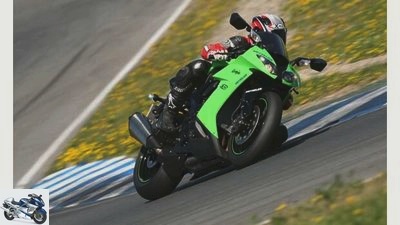
Kawasaki Ninja ZX-10R.
The mean green – the mean green! The Kawasaki Ninja ZX-10R just cannot get rid of its image as an evil, because it is brutal, big bike. And that’s a good thing, because there shouldn’t only be soft-washed superbikes on this planet. Paradoxically, the Kawasaki Ninja ZX-10R is also the Japanese thousand, which wears the tightest (electronic) ankle cuffs below 6000 rpm and is anything but brutal up to this speed.
On the racetrack, however, it looks a little different: Less than 6000 tours are at most at one or the other apex, over 7000 rpm almost always. Beyond that mark, it gets fun because it’s breathtaking. The Kawasaki Ninja ZX-10R is then very hearty, just like a 1000 cubic athlete to the point. Your engine generates beautiful top-end power, has an exemplary gearbox and an excellent slipper clutch.
Their responsiveness when opening the tap is also very pleasing and allows the pilot to call up the horses in a well-sorted manner. In addition, the Kawasaki Ninja ZX-10R turns very quickly and precisely in order to follow the targeted line perfectly. The sophisticated setup that PS gave her and with which she gained some agility certainly has a major influence on her balanced driving behavior. A look at the timesheet shows how much trust such a set Kawasaki Ninja ZX-10R can generate: The author only had to let the professional racing gazelle pour him for 2.3 seconds.
The fact that the Kawasaki Ninja ZX-10R is quite hard-wearing cannot be concealed. Her rear tires no longer looked really good in the evening and, like the Duc, she was one of the candidates on whom the brake pads had to be changed.
KTM 1190 RC8 R.

KTM 1190 RC8 R..
Don’t make the standard mistake now! Just don’t think: “I already know her, she almost looks like the normal one KTM 1190 RC8.” the KTM 1190 RC8 R. is further away from its standard version than, for example, the 1198S from its predecessor 1098S. Starting with 2 millimeters more bore and now 169 hp on the crankshaft to the higher compression and the revised gearbox, to name just a few of the measures, is on the KTM 1190 RC8 R hardly a concise part remained untouched.
On the chassis side, things went on like this: 5 millimeters more caster, softer springs and modified internal damping as well as a 5 millimeter shorter wheelbase are just the roughest chunks, which also include the lighter forged wheels. And yes, all the effort was worth it – definitely! In direct comparison to the Ducati, the 169 hp of the KTM 1190 RC8 R still feel like ponies, but they must be real Arabs. Because the watch speaks a clear, unmistakable language and attests the KTM 1190 RC8 R the second fastest time in the test field – far ahead of the Duc.
How KTM succeeds in making the engine so thin and weak remains its secret, because not only the author, but also all the other testers could only believe the test bench’s certificate after the KTM 1190 RC8 R had burned its fabulous lap time on the asphalt . A large part of the lap time is in the revised chassis: the front and rear dampers now harmonize much better than on the standard version, and the KTM 1190 RC8 R already gives a good feeling on the warm-up lap.
Its handling is almost on a par with the nimble Aprilia, as is its accuracy and precision. However, it feels a lot higher than this, and its idiosyncratic seating position with the high handlebars and the slippery seat pad takes some time to get used to.
On the other hand, it is extremely easy for the rider on the KTM 1190 RC8 R to hide behind the windshield, after all, he sits quite deeply integrated into the motorcycle. So KTM has managed to eradicate the majority of the errors in the RC8, which gives hope for the next generation of two-cylinder engines from Mattighofen. The previously much criticized gearbox can be used as a symbol of the clear progress: In this comparative test, the gear changes on the KTM 1190 RC8 R were much easier than on the Ducati and noticeably more precise than on the GSX-R 1000.
Suzuki GSX-R 1000
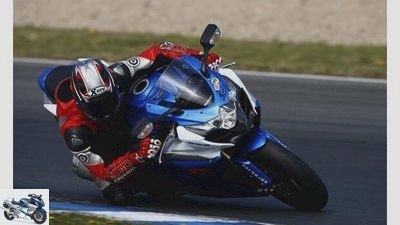
Suzuki GSX-R 1000.
And again a hammer from engine. Despite the changed bore / stroke ratio – the 2009 Suzuki GSX-R 1000 was designed with a shorter stroke than its predecessor – it already pushes against the speed limit like a hard-working bull and pushes man and machine emphatically towards the next braking point from the apex. Unfortunately, when you got there, the gearbox was often annoying when you shift down quickly, liked to miss the connection and got lost on the way from fourth to third gear in the nirvana of intermediate idle runs.
Apart from that, the power house in the Suzuki GSX-R 1000 does its job very well. The engine accelerates smoothly and sensitively, revs up freely and does not emit any disruptive vibrations. Heart, what do you want more? More damping, for example, would be desirable on the chassis. The Suzuki starts, if you force it on the track, pumping slightly at the rear and signals to the pilot that he is already very fast. Your Showa Big Piston Fork does not represent any real advantage over conventionally constructed forks in the braking zone and sags noticeably and deeply in an emergency.
The Suzuki GSX-R 1000 reacted quite sensitively, or rather unwillingly, to the Metzeler Racetec Interact that was being tested. While all the other test subjects got back with the tires without complaint, all test drivers noticed the slow turning behavior of the Suzuki GSX-R 1000. Above all, rapid changes of direction in the chicane required a lot of effort and clearly contradicted the impression that the Suzuki GSX-R 1000 had made in Calafat in the 1000 series (). But once put in an inclined position, it went around the corner with her without complaint and with pinpoint accuracy.
Yamaha YZF-R1
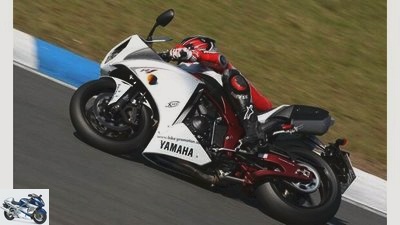
Yamaha YZF-R1.
She is even softer than Suzi Yamaha YZF-R1 tuned. The quick turn-in is okay with her, but her soft spring elements dilute the precision with increasing speed. Its pumping tail clearly and unmistakably indicates when the end of the flagpole has been reached and acknowledges early, brisk acceleration at the apex with slight understeer.
If you want to challenge the great-sounding four-cylinder in a deep lean angle, you should be in the standard mode of the mapping. If mode A is activated, the otherwise very good throttle response turns into a nasty, aggressive heel that likes to mess up the line and introduce further unrest into the soft Yamaha YZF-R1. So leave everything as it is and enjoy the big thrust from the corner, step through the smooth gear and aim at the coming braking point.
Then slow down hard: The fork dips far, but the Yamaha YZF-R1 remains stable enough to turn accurately. Next, savor the inclination and turn the corner with the notch every now and then. Please don’t forget one thing: refueling, because a Yamaha YZF-R1 won’t drive without fuel. And the risk of overlooking the fuel gauge when riding the sound wave of this engine is relatively high.
Technical data Aprilia RSV4 Factory
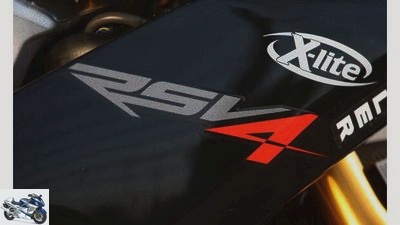
Aprilia RSV4 Factory.
Technical data Aprilia RSV4 Factory
Drive: Four-cylinder 65-degree V-engine, 4 valves / cylinder, 132 kW (180 PS) at 12,500 / min *, 115 Nm at 10,000 / min *, 1000 cm³, bore / stroke: 78.0 / 52, 3 mm, compression ratio: 13.0: 1, ignition / injection system, 48 mm throttle valves, mechanically operated multi-disc oil bath anti-hopping clutch, six-speed gearbox, G-Kat
Landing gear: Light alloy bridge frame, steering head angle: 65.5 degrees, caster: 105 mm, wheelbase: 1420 mm. Up-side-down fork, Ø fork inner tube: 43 mm, adjustable in spring base, rebound and compression. Central spring strut with deflection, adjustable in spring base, length, rebound and compression. Suspension travel front / rear: 120/130 mm
Wheels and brakes: Forged light alloy wheels, 3.50 x 17″/6.00 x 17″, Front tires: 120/70 ZR 17, rear: 190/55 ZR 17. First tires: Pirelli Diablo Supercorsa “SP”. 320 mm double disc brake with four-piston fixed calipers at the front, 220 mm single disc with two-piston fixed calipers at the rear
Measurements and weight: Length / width / height: 2050/750/1130 mm, seat / handlebar height: 845/865 mm, handlebar width: 665 mm, 204 kg fully fueled, v./h .: 50.4 / 49.6%
Rear wheel power in last gear: 120 kW (163 hp) at 284 km / h
Driving performance: Acceleration 0-100 / 150/200 km / h: 3.2 / 5.1 / 7.8 s, pulling speed 50-100 / 100-150 km / h: 4.7 / 4.5 s
Top speed: 295 km / h *
Consumption: Fuel type: Super unleaded. Average test consumption: k. A., tank capacity 17 liters, range: ns. A..
Base price: 19 500 Euro (plus ancillary costs)
* Factory specification
Technical data Ducati 1198S
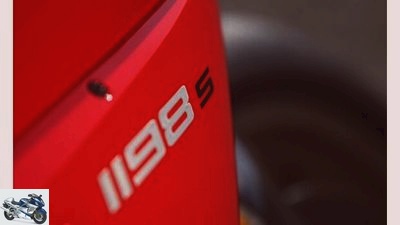
Ducati 1198S.
Technical data Ducati 1198S
Drive: Two-cylinder 90-degree V-engine, four valves / cylinder, 125 kW (170 PS) at 9750 rpm *, 131 Nm at 8000 rpm *, 1198 cm³, bore / stroke: 106.0 / 67.9 mm, compression ratio: 12.7: 1, ignition / injection system, 64 mm throttle valves, hydraulically operated multi-plate dry clutch, six-speed gearbox, G-Kat
Landing gear: Steel tubular space frame, steering head angle: 65.5 degrees, caster: 97 mm, wheelbase: 1430 mm, upside-down fork, Ø fork inner tube: 43 mm, adjustable in spring base, rebound and compression. Central spring strut with deflection, adjustable in spring base, rebound and compression stage. Suspension travel front / rear: 127/127 mm
Wheels and brakes: Forged light alloy wheels, 3.50 x 17″/6.00 x 17″, Front tires: 120/70 ZR 17, rear: 190/55 ZR 17, first tires: Pirelli Diablo Supercorsa “SP”, 330 mm double disc brake with four-piston fixed calipers at the front, 245 mm single disc with two-piston fixed calipers at the rear
Measurements and weight: Length / width / height: 2080/810/1100 mm, seat / handlebar height: 810/860 mm, handlebar width: 675 mm, 197 kg with a full tank, v./h .: 49.4 / 50.6%
Rear wheel power in last gear: 116 kW (158 PS) at 264 km / h
Driving performance: Acceleration 0-100 / 150/200 km / h: 3.2 / 5.3 / 8.0 s Pull-through 50-100 / 100-150 km / h: 5.0 / 4.1 s
Top speed: 288 km / h *
Consumption: Fuel type: Super unleaded. Average test consumption: k. A., tank content 15.5 liters, range: ns. A..
Base price: 21,990 euros (plus ancillary costs)
* Factory specification
Technical data Honda Fireblade
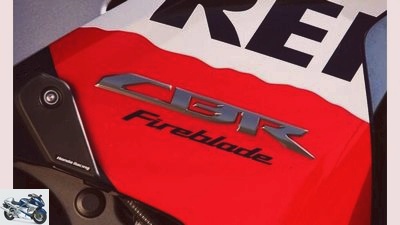
Honda Fireblade.
Technical data Honda Fireblade
Drive: Four-cylinder in-line engine, 4 valves / cylinder, 131 kW (178 PS) at 11200 / min *, 112 Nm at 8500 / min *, 1000 cm³, bore / stroke: 76.0 / 55.1 mm, compression ratio: 12.3 : 1, ignition / injection system, 46 mm throttle valves, mechanically operated multi-disc oil bath anti-hopping clutch, six-speed gearbox, G-Kat
Landing gear: Light alloy bridge frame, steering head angle: 66.8 degrees, caster: 96 mm, wheelbase: 1410 mm, upside-down fork, Ø fork inner tube: 43 mm, adjustable in spring base, rebound and compression stage, central spring strut with deflection, adjustable in spring base, Rebound and compression, spring travel front / rear: 120/135 mm
Wheels and brakes: Light alloy cast wheels, 3.50 x 17″/6.00 x 17″, Front tires: 120/70 ZR 17, rear: 190/50 ZR 17. First tires: Bridgestone BT 015 “F.”. 320 mm double disc brake with four-piston fixed calipers at the front, 320 mm single-disc brake with single-piston floating caliper at the rear
Measurements and weight: Length / width / height: 2090/830/1130 mm, seat / handlebar height: 815/860 mm, handlebar width: 650 mm, 209 kg fully fueled, v./h .: 51.8 / 48.2%
Rear wheel power in last gear: 120.8 kW (164 PS) at 257 km / h
Driving performance: Acceleration 0-100 / 150/200 km / h: 3.3 / 5.2 / 7.5 s, pulling speed 50-100 / 100-150 km / h: 4.5 / 3.6 s
Top speed: 293 km / h *
Consumption: Fuel type: Super unleaded. Average test consumption: k. A., tank capacity 17.7 liters, range: ns. A..
Base price: 14 790 euros (plus ancillary costs, C-ABS 1000 euros surcharge, HRC paintwork 100 euros, Repsol paintwork 500 euros)
* Factory specification
Technical data Kawasaki Ninja ZX-10R
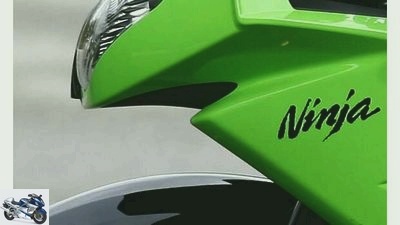
fact
Kawasaki Ninja ZX-10R.
Technical data Kawasaki Ninja ZX-10R
Drive: Four-cylinder in-line engine, 4 valves / cylinder, 138 kW (188 hp) at 12500 / min *, 113 Nm at 8700 / min *, 998 cm³, bore / stroke: 76.0 / 55.0 mm, compression ratio: 12.9 : 1, ignition / injection system, 43 mm throttle valves, mechanically operated multi-disc oil bath anti-hopping clutch, six-speed gearbox, G-Kat
Landing gear: Light alloy bridge frame, steering head angle: 64.5 degrees, caster: 110 mm, wheelbase: 1415 mm. Upside-down fork, Ø fork inner tube: 43 mm, adjustable in spring base, rebound and compression. Central spring strut with deflection, adjustable in spring base, rebound and compression stage (high / low). Spring travel v./h .: 120/125 mm
Wheels and brakes: Light alloy cast wheels, 3.50 x 17″/6.00 x 17″, Front tires: 120/70 ZR 17, rear: 190/55 ZR 17. First tires: Pirelli Diablo Corsa III, front “N”. 310 mm double disc brake with four-piston fixed calipers at the front, 220 mm single disc with single-piston floating caliper at the rear
Measurements and weight: Length / width / height: 2120/840/1130 mm, seat / handlebar height: 820/860 mm, handlebar width: 650 mm, 208 kg fully fueled, v./h .: 50.7 / 49.3%
Rear wheel power in last gear: 124 kW (169 PS) at 275 km / h
Driving performance: Acceleration 0-100 / 150/200 km / h: 3.2 / 5.2 / 7.6 s, pulling speed 50-100 / 100-150 km / h: 5.4 / 4.2 s
Top speed: 298 km / h *
Consumption: Fuel type: Super unleaded. Average test consumption: k. A., tank content 17 liters, range: ns. A..
Base price: 13 645 Euro (plus ancillary costs)
* Factory specification
Technical data KTM 1190 RC8 R
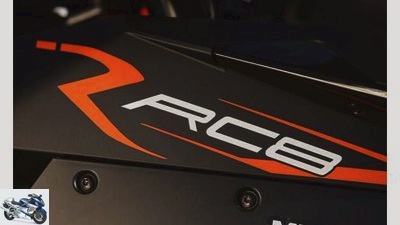
KTM 1190 RC8 R..
Technical data KTM 1190 RC8 R
Drive: Two-cylinder 75-degree V-engine, 4 valves / cylinder, 125 kW (170 PS) at 10 250 / min *, 123 Nm at 8000 / min *, 1195 cm³, bore / stroke: 105.0 / 69.0 mm, compression ratio: 13.5: 1, ignition / injection system, 52 mm throttle valves, hydraulically operated multi-plate oil bath clutch, six-speed gearbox, G-Kat
Landing gear: Steel tubular space frame, steering head angle: 66.7 degrees, caster: 97 mm, wheelbase: 1425 mm. Up-side-down fork, Ø fork inner tube: 43 mm, adjustable in spring base, rebound and compression. Central spring strut with deflection, adjustable in spring base, rebound and compression stage. Spring travel v./h .: 120/120 mm
Wheels and brakes: Forged light alloy wheels, 3.50 x 17″/6.00 x 17″, Front tires: 120/70 ZR 17, rear: 190/55 ZR 17. First tires: Pirelli Diablo Supercorsa “SP”. 320 mm double disc brake with four-piston fixed calipers at the front, 220 mm single disc with two-piston fixed calipers at the rear
Measurements and weight: Length / width / height: 2050/830/1110 mm, seat / handlebar height: 810/880 mm, handlebar width: 665 mm, 199 kg fully fueled, v./h .: 52.8 / 47.2%
Rear wheel power in last gear: 115 kW (156 PS) at 266 km / h
Driving performance: Acceleration 0-100 / 150/200 km / h: 3.2 / 5.2 / 8.0 s, pulling speed 50-100 / 100-150 km / h: 4.8 / 4.6 s
Top speed: 280 km / h *
Consumption: Fuel type: Super unleaded. Average test consumption: k. A., tank capacity 16.5 liters, range: ns. A..
Base price: 20995 Euro (plus additional costs)
* Factory specification
Technical data Suzuki GSX-R 1000
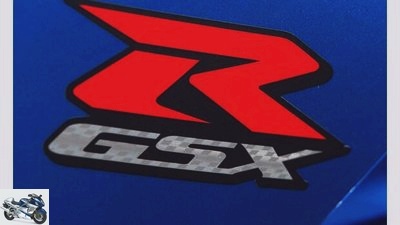
Suzuki GSX-R 1000.
Technical data Suzuki GSX-R 1000
Drive: Four-cylinder in-line engine, 4 valves / cylinder, 136 kW (185 PS) at 12000 / min *, 117 Nm at 10000 / min *, 999 cm³, bore / stroke: 74.5 / 57.3 mm, compression ratio: 12.5 : 1, ignition / injection system, 44 mm throttle valves, mechanically operated multi-disc oil bath anti-hopping clutch, six-speed gearbox, G-Kat
Landing gear: Light alloy bridge frame, steering head angle: 66.5 degrees, caster: 98 mm, wheelbase: 1405 mm, upside-down fork, Ø fork inner tube: 43 mm, adjustable in spring base, rebound and compression level. Central spring strut with deflection, adjustable in spring base, rebound and compression stage (high / low), spring travel v./h .: 125/130 mm
Wheels and brakes: Light alloy cast wheels, 3.50 x 17″/6.00 x 17″, Front tires: 120/70 ZR 17, rear: 190/50 ZR 17, initial tires: Bridgestone BT 016 “N”, 310 mm double disc brake with four-piston fixed calipers at the front, 220 mm single disc with single-piston floating caliper at the rear
Measurements and weight: Length / width / height: 2120/970/1150 mm, seat / handlebar height: 810/860 mm, handlebar width: 635 mm, 208 kg fully fueled, v./h .: 51.0 / 49.0%
Rear wheel power in last gear: 120 kW (163 PS) at 251 km / h
Driving performance: Acceleration: 0-100 / 150/200 km / h: 3.2 / 5.2 / 7.6 s Pulling power 50-100 / 100-150 km / h: 4.5 / 4.1 s
Top speed: 295 km / h *
Consumption: Fuel type: Super unleaded. Average test consumption: k. A., tank capacity 17.5 liters, range: ns. A..
Base price: 13890 Euro (plus additional costs)
* Factory specification
Technical data Yamaha YZF-R1
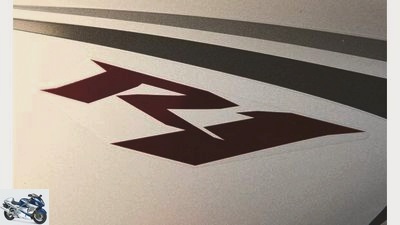
Yamaha YZF-R1.
Technical data Yamaha YZF-R1
Drive: Four-cylinder in-line engine, 4 valves / cylinder, 134 kW (182 PS) at 12500 / min *, 116 Nm at 10000 / min *, 998 cm³, bore / stroke: 78.0 / 52.2 mm, compression ratio: 12.7 : 1, ignition / injection system, 45 mm throttle valves, mechanically operated multi-disc oil bath anti-hopping clutch, six-speed gearbox, G-Kat
Landing gear: Light alloy bridge frame, steering head angle: 66.0 degrees, caster: 102 mm, wheelbase: 1415 mm, upside-down fork, Ø fork inner tube: 43 mm, adjustable in spring base, rebound and compression level. Central spring strut with deflection, adjustable in spring base, rebound and compression stage, spring travel from / h .: 120/120 mm
Wheels and brakes: Light alloy cast wheels, 3.50 x 17″/6.00 x 17″, Front tires: 120/70 ZR 17, rear: 190/55 ZR 17, first tires: Michelin Pilot Power, front “P.”, 310 mm double disc brake with six-piston fixed calipers at the front, 220 mm single disc with single-piston floating caliper at the rear
Measurements and weight: Length / width / height: 2090/775/1120 mm, seat / handlebar height: 820/840 mm, handlebar width: 650 mm, 214 kg fully fueled, v./h .: 52.3 / 47.7%
Rear wheel power in last gear: 117 kW (159 PS) at 263 km / h
Driving performance: Acceleration 0-100 / 150/200 km / h: 3.2 / 5.1 / 7.5 s, pulling power: 50-100 / 100-150 km / h: 4.0 / 3.9 s
Top speed: 285 km / h *
Consumption: Fuel type: Super unleaded. Average test consumption: k. A., tank capacity 18 liters, range: ns. A..
Base price: 14895 Euro (plus ancillary costs)
* Factory specification
Performance measurement, setup
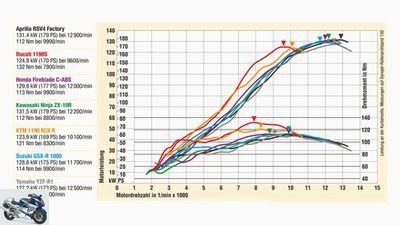
Power and torque diagrams of the seven superbikes tested.
In terms of performance measurement, it is respectable that Aprilia with the new V4 engine succeeds in penetrating the power array of the four-in-a-row. In comparison, its curve is in large areas below that of the competition, but on the track it simply compensates for this with a higher speed.
A surprising picture for the Twins: Despite almost the same peak performance, between 6000 and 10000 rpm the KTM always has significantly less performance than the Ducati. The fact that the KTM is still significantly faster is due to the Italian’s messed up setup. The Suzuki feels subjectively strong as a bear, but does not really stand out on the role.
The standard setup of a ready-to-sell superbike is only suitable for lap times on a specific race track in exceptional cases. So the PS test crew packed a hook wrench and screwdriver & Consorts to help the suspension settings a little on the jumps. The results of the work can be found below – as a PDF download.
Lap times Oschersleben
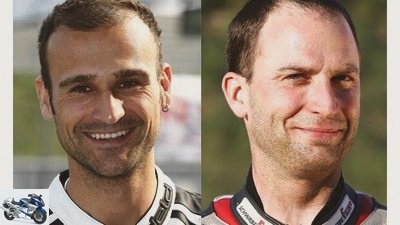
IDM professional Pascal Eckhardt (left), hobby racer Robert Gluck.
IDM professional Pascal Eckhardt and hobby racer Robert Gluck rode the seven superbikes on time. The overview shows your fastest lap with each motorcycle.
| Lap times Oschersleben |
HP rating Aprilia RSV4 Factory

Aprilia RSV4 Factory.
HP rating Aprilia RSV4 Factory
Propulsion: 10 out of 10 points
The V4 advances in a linear and finely controllable manner, feels more like a 750 than a 1000 and is very easy to dose in S mode.
Chassis: 10 out of 10 points
Breathtaking agility, super precision and their great stability in all areas ensure maximum points. Only a 250 is more playful.
Ergonomics: 9 out of 10 points
The RSV4 is a very small and compact motorcycle, which is why tall pilots (over 183 cm) have problems on it. The driver does not sit too sportily.
Driving pleasure: 10 out of 10 points
A killer who enjoys hunting. The faster it can run, the more fun it will be for its driver. You don’t really want to go down any more.
PS judgment: 39 points, 1st place
Wow! Game, set and win in the first big match. The Factory has turned out to be a sociable racer with street legal approval
HP rating Ducati 1198S
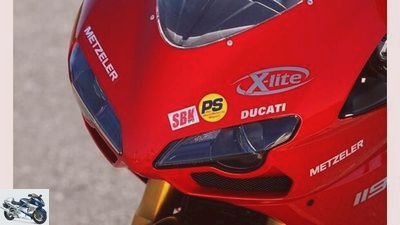
Ducati 1198S.
HP rating Ducati 1198S
Drive: 8 out of 10 points
The power twin is still exciting, as is the sound and traction control. However, the stubborn gear with high operating force is annoying.
Chassis: 6 out of 10 points
Clear words from the international testers to Bologna: Your basic setup is crap, too soft at the front and too tight at the back. Finally do something about it.
Ergonomics: 7 out of 10 points
There is a lot of pressure on the arms because the stubs are placed far in front and low. But the tank is very narrow and the pilot has a lot of space to work.
Driving pleasure: 8 out of 10 points
The traction control is the icing on the cake. You can’t have more fun accelerating out, because leaning wheelies have never been easier and safer!
PS judgment: 29 points, 7th place
All in all, the 1198S loses too many points due to its idiosyncratic vote. It’s a shame, because the V-engine and the Brembo brakes are great.
HP rating Honda Fireblade
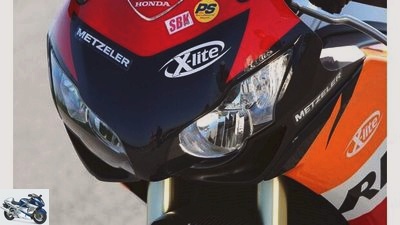
Honda Fireblade.
HP rating Honda Fireblade
Drive: 9 out of 10 points
Mr. Nice-Guy in person. The Honda pushes hard, but never overwhelms, has a precise gearbox and a smoothly functioning slipper clutch.
Chassis: 9 out of 10 points
Good response and good feedback make the driver happy. The extra pounds of ABS have dampened agility somewhat. Nevertheless, she acts very harmoniously.
Ergonomics: 9 out of 10 points
As always, the Blade’s sofa-like seating position is convincing. Although it is very compact, it is neither uncomfortable nor too sporty to sit on.
Driving pleasure: 7 out of 10 points
Having fun also has something to do with character. And this is not necessarily the parade discipline of an egg-laying woolly milk sow athlete. Especially not with the fun brake ABS.
PS judgment: 34 points, 3rd place
The Fireblade is a good-natured burner that has no serious weaknesses, but is only moderately fascinating. That’s life
HP rating Kawasaki Ninja ZX-10R
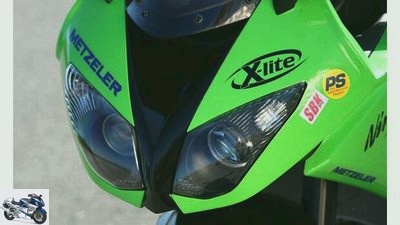
Kawasaki Ninja ZX-10R.
Horsepower rating Kawasaki Ninja ZX-10R
Drive: 8 out of 10 points
A good gearbox and a great slipper clutch make you happy, the moderate pressure in the middle makes the ZX-10R more strenuous than the other four.
Chassis: 8 out of 10 points
The standard setting is very conservative, with adjusted settings, the green is much more agile and precise – and therefore much more fun to drive.
Ergonomics: 8 out of 10 points
No surprises on the Kawasaki. Everything fits well, but the sitting position on the rather large ninja could be a little more active.
Driving pleasure: 8 out of 10 points
The Kawa may not be the fastest, but it is one of the most fascinating 1000s when the clock is over 6000 rpm and the green flash really goes forward.
PS judgment: 32 points, 6th place
The green one is close to the Japanese colleagues, but not quite as smoothly washed as this one. Points aren’t everything, character is more fascinating.
HP rating KTM 1190 RC8 R
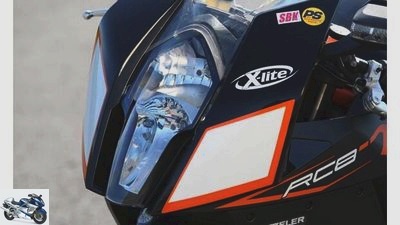
KTM 1190 RC8 R..
HP rating KTM 1190 RC8 R
Drive: 8 out of 10 points
What a step forward to the RC8 without R. Less vibrations, a precise gearbox and a decent throttle response can convince.
Chassis: 10 out of 10 points
At eye level with the Aprilia in terms of handling, stability and neutrality. The brake is snappy and transparent, the whole setting is very crisp.
Ergonomics: 8 out of 10 points
Due to the high seat, the slippery upholstery and the high handlebar stubs, the narrow KTM feels very different to the other motorcycles in the test.
Driving pleasure: 9 out of 10 points
The RC8 R is a demanding bike. Those who get involved with them can have a lot of fun and be as fast as an arrow. Those who can’t get along with it reap the red lantern.
PS judgment: 35 points, 2nd place
The Austrian is still unique, but already significantly better than the basic RC8. The development went in the right direction
HP rating Suzuki GSX-R 1000
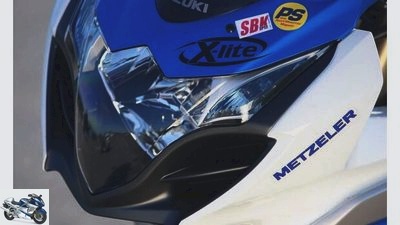
Suzuki GSX-R 1000.
HP rating Suzuki GSX-R 1000
Drive: 9 out of 10 points
The power house among the four-cylinder engines unfortunately had a bitchy gearbox. Smooth throttle response and a beefy middle are a lot of fun.
Chassis: 7 out of 10 points
The Suzuki feels heavy, especially in chicanes. Her basic setup is quite soft, which is why she is always on the move. Great anti-hop clutch.
Ergonomics: 9 out of 10 points
The Suzuki seems to have copied the Honda. Your seating position is a good compromise on the racetrack and it offers plenty of space for the pilot.
Driving pleasure: 8 out of 10 points
The engine generates driving pleasure, the sluggish handling costs some points. The Suzuki is similar to the Fireblade: quite unemotional and unexcited.
PS judgment: 33 points, 5th place
The Gixxer model year 2009 has lost the brutal charm of a K1 / K2 variant. But it is now almost foolproof and without any pitfalls to drive.
HP rating Yamaha YZF-R1
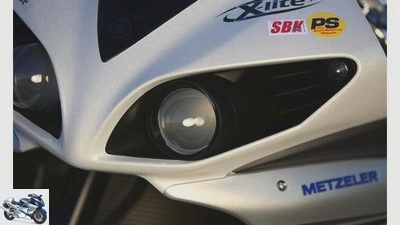
Yamaha YZF-R1.
HP rating Yamaha YZF-R1
Drive: 9 out of 10 points
Her A mode is too aggressive and in the middle she is a little weaker than Suzuki and Kawa. Their sound, on the other hand, impressed every pilot, as did their transmission.
Chassis: 8 out of 10 points
The R1 is designed to be very soft for the racetrack, but has great handling. Hobby racers have to have their chassis revised.
Ergonomics: 9 out of 10 points
The yam also offers enough space to work, you sit compactly and collectively. The footrests scratch the asphalt every now and then, as do the boots.
Driving pleasure: 8 out of 10 points
Handling and sound make for a wonderful driving pleasure, but their soft coordination quickly sets limits when shooting on the track.
PS judgment: 34 points, 3rd place
The optics are welcome to discuss, but not their qualities, because they are fixed. The YZF-R1 is different because it wants to be different. Good this way!
Conclusion
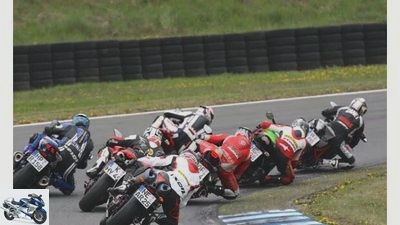
Even in the greatest crisis, there are positive things to report every now and then. The PS Supersport Days in Oschersleben are definitely part of it, as there were two premieres to celebrate there. On the one hand, Aprilia’s new Superbike RSV4 Factory faced the assembled competition for the first time to exchange blows within the class, on the other hand, with this comparison test, PS hosted an international event with journalists from six countries. The editors of Cycle World / USA, La Moto / Spain, Moto Journal / France, Motorwereld / Belgium and InMoto / Italy accepted the invitation to the Superbike meeting in East Germany and were thus able to fill the gap that the failure of this year’s Masterbike tore into the agenda had. In 25 time blocks spread over three days, six, at times seven journalists, supported by time driver Pascal Eckhardt, burned a total of 800 liters of fuel and 21 sets of Metzeler Racetec Interact K3.
Between the turns, a bewitching mixture of laughter, at least four languages, a ratchet creak and the smell of fuel developed in the PS box, which even attracted some prominent racing drivers: Jorg Teuchert and Christian Kellner came by for a handshake and a Coke and philosophized about the design of the RSV4; Even Jurgen Fuchs left his top-secret BMW S 1000 RR instructor motorcycle unattended for a few moments to watch what was going on.
With such great interest Aprilia insisted on treating his star to a personal supervisor; KTM also supported the test participant RC8 R through press man and technicians. The latter arrived in Oschersleben just in time to roll the black and orange beauty off the broom wagon after the first turn of the second day: flat tire at the back. Fortunately, there were no other defects, only a short rain shower on the morning of the time trial day raised the pulse of the management rookie Uwe Seitz who was responsible for the test. After four hours the track was dry again, and the journalists fanned out to elicit the last subtleties, secrets and tenths of a second from the seven superbikes.
Conclusion: There was a lot of clapping: The Aprilia RSV4 Factory takes over the reins in the thousand-meter class from the start. At least on the racetrack it can’t be bent, the performance was convincing. Second place goes to the heavily revised KTM 1190 RC8 R, which is just ahead of the ABS-Honda Fireblade and the tied, emotional Yamaha YZF-R1. Behind it is the Suzuki GSX-R 1000, which suffered a bit from the test tires and its transmission. In such a narrow test field, these are already knockout criteria. 6th place for the Kawasaki Ninja ZX-10R, which is a little behind despite its lap times. The Ducati 1198S brings up the rear with traction control and charisma.
Credits
Thanks a lot to…
Without partners and supporters, PS would not have been able to take a test on this scale. For this reason, our special thanks go to Bike Promotion for organizing the race training around the test procedure, to X-lite for the support and the helmet service, to Metzeler for lots of fresh rubber and the tire service and to Dieter Kuhn from videobiker.de, who recorded the events surrounding the test on video.
Related articles
-
Honda Fireblade, Kawasaki Ninja ZX-10R, Suzuki GSX-R 1000, Yamaha YZF-R1
fact 28 pictures Honda 1/28 Honda 2/28 Honda 3/28 Honda 4/28 Honda 5/28 Honda 6/28 Honda 7/28 Honda 8/28 Honda 9/28 Honda 10/28 Honda 11/28 Honda 12/28…
-
Honda CBR 600 RR, Kawasaki Ninja ZX-6R, Suzuki GSX-R 600, Triumph Daytona 675, Yamaha YZF-R6
Jahn 15th pictures Honda 1/15 For the model year 2009 Honda presents a facelifted CBR 600 RR. The well-known 600 cubic four-cylinder has been trimmed for…
-
Comparison test Kawasaki Ninja ZX-6R, Triumph Daytona 675, Yamaha YZF-R6
Fact 9 pictures triumph 1/9 Triumph Daytona 675 triumph 2/9 Triumph Daytona 675 triumph 3/9 Triumph Daytona 675 triumph 4/9 Triumph Daytona 675 triumph…
-
Comparison test Ducati Monster 1200 S, Honda Fireblade, Kawasaki Z 1000 SX, Suzuki GSX-S 1000 F
jkuenstle.de 27 pictures jkuenstle.de 1/27 The disguised Suzuki GSX-S 1000 F has to prove itself in the field of competitors. jkuenstle.de 2/27 Nice is…
-
fact motorcycles Comparison test: Honda CBR 600 RR, Kawasaki ZX-6R, Suzuki GSX-R 600, Triumph Daytona 675, Yamaha YZF-R6 Comparison test: Honda CBR 600…
-
Comparison test Ducati 1098S, Honda Fireblade, KTM 1190 RC8, Triumph Daytona 675, Yamaha YZF-R6
Jahn motorcycles Comparison test Ducati 1098S, Honda Fireblade, KTM 1190 RC8, Triumph Daytona 675, Yamaha YZF-R6 Comparison test Ducati 1098S, Honda…
-
Honda CB 1000 R, KTM 690 Duke R, Suzuki GSX-R 750 and Yamaha MT-09 in the test
fact 23 pictures fact 1/23 Forget game consoles! The real action takes place on the diverse country roads of the republic. In this crossover test, four…
-
Concept comparison: Honda Fireblade, KTM 990 Super Duke R, Suzuki GSX-R 600, Yamaha FZ6
Gargolov motorcycles Concept comparison: Honda Fireblade, KTM 990 Super Duke R, Suzuki GSX-R 600, Yamaha FZ6 Concept comparison: Honda Fireblade, KTM 990…
-
Big bikes from Honda, Suzuki, Kawasaki and Yamaha
archive counselor Used purchase Big bikes from Honda, Suzuki, Kawasaki and Yamaha Buying advice: big bikes The big bike generation from 1984 Content of…
-
K motorcycles Suzuki GSX-R 600/750/1000 Suzuki GSX-R 600/750/1000 Fisherman’s Friends Content of If they are too strong, you are too weak. What does a…